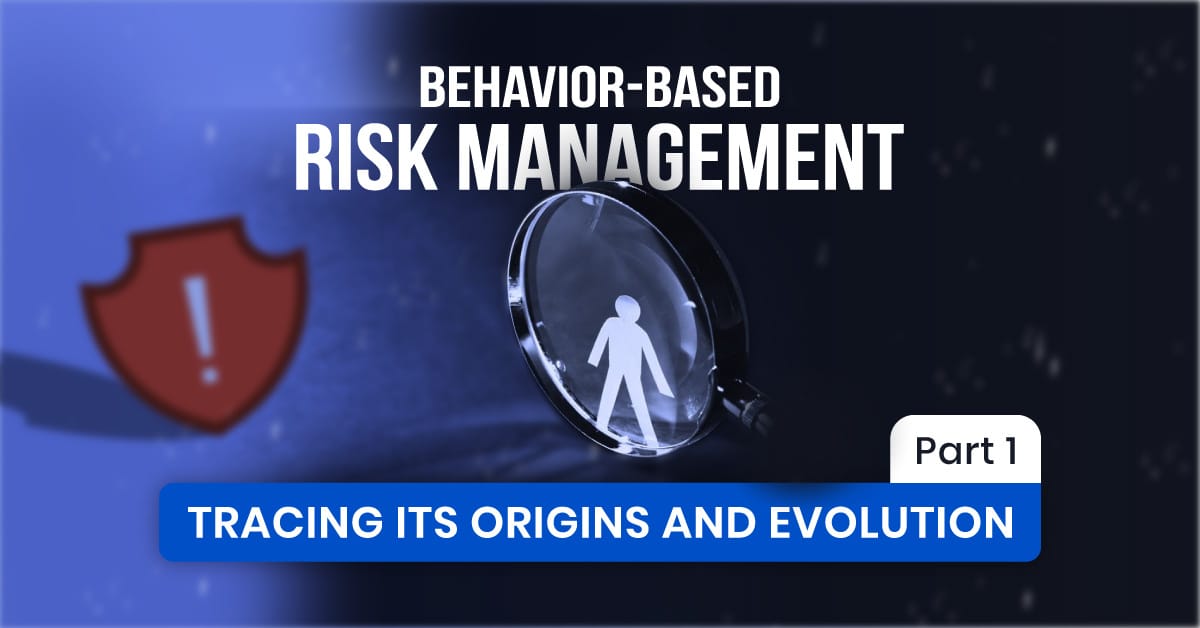Contributed By: James Brigham, Risk/Threat Mitigation Expert
In today’s corporate world, as well as in nonprofit and other private-sector organizations, behavior-based risk management has become a fundamental strategy for anticipating and preventing incidents, reducing operational and compliance risks, and nurturing a proactive culture. Despite its growing prevalence, this concept did not appear overnight. It has deep roots in early industrial safety theories, findings from behavioral psychology, and the subsequent development of organizational behavior management techniques.
Below, in Part One of the Two-Part series, we explore how these ideas evolved over time.
1. Early Industrial Safety Theories: Laying the Foundation
1.1 Heinrich’s Domino Theory (1930s)
One of the earliest formal links between human behavior and workplace incidents came from Herbert William Heinrich, an American industrial safety pioneer. In his 1931 book, Industrial Accident Prevention: A Scientific Approach, Heinrich introduced the Domino Theory, explaining that workplace accidents typically result from a chain of events, often set in motion by unsafe acts or conditions 11.
According to Heinrich, removing one “domino” in the sequence—most commonly an unsafe act—could prevent the entire chain from culminating in an accident. This was groundbreaking for its time, suggesting that employee behavior was just as crucial to overall safety as engineering controls or protective equipment.
While aspects of Heinrich’s work have been debated and updated over the years, his influence on modern safety culture remains significant. Many organizations still embrace the principle that modifying at-risk behaviors can substantially decrease accidents and other negative outcomes in the workplace.
1.2 The Shift to Individual Responsibility
Throughout the mid-20th century, industrial safety measures largely focused on engineering controls (e.g., machine guards, safety gear) to mitigate hazards. However, technology alone could not eliminate the human factor: incidents often persisted when workers bypassed safety protocols or failed to follow procedures.
Recognizing this gap, companies integrated training and behavioral guidelines into their safety programs. Supervisors began monitoring employee actions to ensure compliance and intervening when they observed unsafe practices. Emphasizing individual responsibility gained traction, setting the stage for more structured behavior-based models that are now widely adopted in both the corporate and nonprofit sectors.
2. The Influence of Behavioral Psychology
2.1 B.F. Skinner and Operant Conditioning
Behavioral psychology made a significant leap in understanding how to shape and maintain desired behaviors. In Science and Human Behavior (1953), B.F. Skinner described operant conditioning, arguing that consequences—be they positive reinforcement, negative reinforcement, or punishment—could strengthen or weaken behaviors 22.
Although Skinner’s work was primarily theoretical, its relevance to workplace settings became quickly apparent. If rewarding safe practices increase adherence to guidelines, managers and safety professionals can design targeted interventions that encourage positive behaviors. This approach differs from older, more punitive methods that risk alienating employees or driving risky behavior underground.
2.2 Emergence of Organizational Behavior Management (OBM)
Building upon Skinner’s principles, Organizational Behavior Management (OBM) emerged in the 1960s and 1970s as a field dedicated to applying behavioral science to real-world workplace challenges. Researchers in OBM gathered empirical data on employee actions and leveraged reinforcement strategies to boost performance and minimize errors 33.
The OBM process is systematic:
- Define Target Behaviors: Identify which actions lead to increased risk and which demonstrate safety or compliance.
- Measure and Observe: Use objective measures to gather baseline data on these behaviors.
- Apply Interventions: Utilize positive reinforcement (e.g., recognition, incentives) to encourage safe actions while applying corrective strategies for at-risk behaviors.
- Review and Adjust: Continuously track progress and refine interventions based on empirical results.
This data-driven rigor laid the groundwork for what would eventually be termed behavior-based risk management, merging academic theories with practical workplace policies focused on shaping and sustaining the right behaviors.
3. Behavior-Based Safety (BBS) and Its Expansion
3.1 The Rise of Behavior-Based Safety Programs
In the late 1970s and early 1980s, practitioners started to formalize a concept known as Behavior-Based Safety (BBS). This structured methodology—pioneered in part by E. Scott Geller—emphasizes direct observation, measurement systems, and immediate feedback to reduce unsafe acts 44. Key elements include:
- Identifying root causes of unsafe behavior (e.g., insufficient training, poor ergonomics).
- Providing constructive, real-time feedback to encourage safer actions.
- Fostering a peer-driven culture where employees actively observe and coach each other.
Rather than assigning blame or punishment, BBS focuses on positive reinforcement for safe behaviors and open dialogue around potential improvements. This approach helps cultivate an atmosphere of mutual responsibility, where everyone feels accountable for safety.
3.2 Beyond Industrial Safety—Entering the Risk Management Domain
Originally, Behavior-Based Safety was popular in industrial and manufacturing settings, where the risk of physical accidents was high. Over time, however, leaders in diverse organizations recognized the broader applicability of these principles. By tracking and guiding human behaviors, one could mitigate not just physical accidents but also other organizational risks, such as:
- Data Security & Insider Threats
- Regulatory & Compliance Concerns
- Fraud Detection & Prevention
- Physical Security & Access Control
- Quality Assurance & Process Reliability
This expansion, often referred to as Behavior-Based Risk Management, represents a more holistic outlook. It underscores that people’s decisions and actions can make or break organizational success, whether in a Fortune 500 company, a local nonprofit, or a fast-growing tech startup.
Next week, in Part Two, we will discuss how companies—from global enterprises to local nonprofits—can implement behavior-based risk management to foster safer, more reliable operations and enhance overall organizational resilience.







